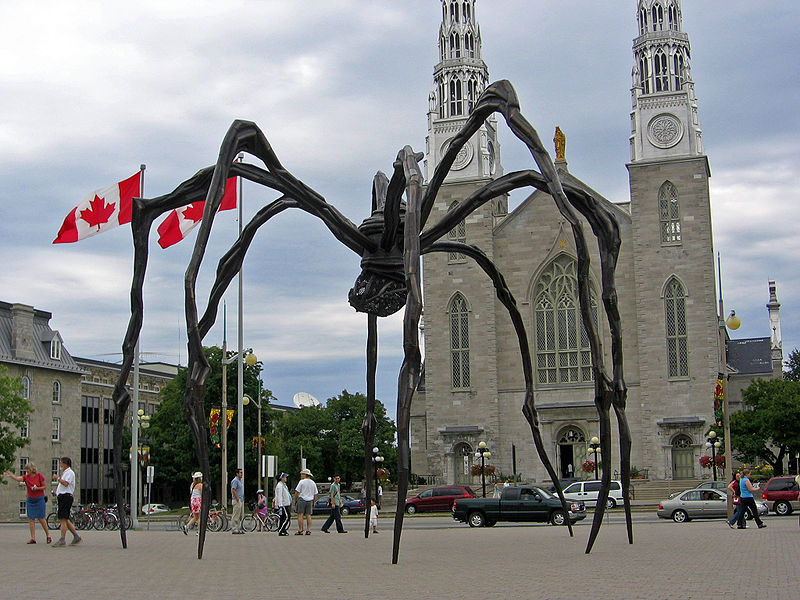Louise Bourgeois, Influential Sculptor, Dies at 98

"Maman" by Louise Bourgeois
The New York Times - Louise Bourgeois, the French-born American artist who gained fame only late in a long career, when her psychologically charged abstract sculptures, drawings and prints had a galvanizing effect on the work of younger artists, particularly women, died on Monday in Manhattan, where she lived. She was 98.
Ms. Bourgeois’s sculptures in wood, steel, stone and cast rubber, often organic in form and sexually explicit, emotionally aggressive yet witty, covered many stylistic bases.
Among her most familiar sculptures was the much-exhibited “Nature Study” (1984), a headless sphinx with powerful claws and multiple breasts. Perhaps the most provocative was “Fillette” (1968), a large, detached latex phallus. Ms. Bourgeois can be seen carrying this object, nonchalantly tucked under one arm, in a portrait by the photographer Robert Mapplethorpe taken for the catalog of her 1982 retrospective at the Museum of Modern Art. (In the catalog, the Mapplethorpe picture is cropped to show only the artist’s smiling face.)
That retrospective brought Ms. Bourgeois, in her early 70s, the critical and popular acclaim that had long eluded her. In 1993 she represented the United States in the Venice Biennale. In an art world where women had been treated as second-class citizens and were discouraged from dealing with overtly sexual subject matter, she quickly assumed an emblematic presence. Her work was read by many as an assertive feminist statement, her career as an example of perseverance in the face of neglect. Read more.

Comments
Post a Comment